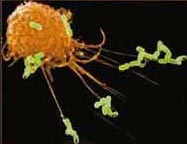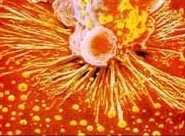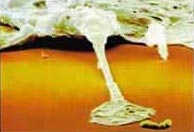Most of us are familiar with high communications towers, and many of us have seen television news reports of the opening of such installations. The first impression that these images leave on our minds is probably the image of a structure full of antennas and complicated electrical devices. This idea is not mistaken because, in order to understand the technological devices used in these installations, one must have a certain engineering expertise in electronics and communications. Besides this, almost all of us believe that these facilities are now indispensable in enabling us to establish communication with people in every part of the world. Just think of this: What would happen if all the communications towers, with their centers and stations, were to shut down for a short time? There is no doubt that this situation would cause great chaos and anxiety. But, no matter how much material damage might result, it could still be repaired.

However, if the communication between our hundred trillion cells, or the communication within one cell, were to shut down for just an instant, and the cellular messages were not to reach their destination, the result would be death. Modern communication systems are established using electronic and mechanical devices with the most advanced technology. However, the advanced technology of the inner communications systems of cells, which is too advanced for human beings to fathom, is constructed with the use of devices structured from protein. Inside protein there are no electrical circuits (or even semi-conductors) as exist in modern devices; in their place are atoms of carbon, hydrogen, oxygen and nitrogen. There are an estimated 30,000 different proteins in our body and of these, the function of only two percent is completely understood. (M. Encarta Encyclopedia 2000, "Protein") The function performed for human beings by many proteins is still largely unknown. The communications system among cells in some ways resembles systems used by human beings. For example, on the membranes of the cells there are "antennae" that allow them to sense the messages that come to them. Immediately under these antennae are "power stations" which decode the message sent to the cell.
The communications system among cells in some ways resembles systems used by human beings. For example, on the membranes of the cells there are "antennae" that allow them to sense the messages that come to them. Immediately under these antennae are "power stations" which decode the message sent to the cell.
These antennae are located on the one hundred thousandth of a millimeter thick cell membrane that surrounds the cell. This receptor, which is known as "tyrosine kinase," is composed of three basic sections: the antenna, the body and the tail. The shape of the part of the antenna that projects out from the cell membrane resembles a dish antenna used to collect satellite transmissions. Just as each dish antenna is designed to receive certain satellite transmissions, there are different receptors that understand the language of the messages carried by various hormone molecules.
The messages coming from different cells/hormones come into contact with the antennae on the cell membrane, but each antenna is designed to sense only one single message. This is a very special instance of design and because of this, a message cannot be sent in error to another cell. The great harmony in which hormones and antennae are created in relation to one another can be compared to the lock-and-key relation observed in almost all biological activity. Only the right key can open the lock; that is, only the right cell will have anything to do with the message sent, this message being without meaning for other cells.
The great harmony in which hormones and antennae are created in relation to one another can be compared to the lock-and-key relation observed in almost all biological activity. Only the right key can open the lock; that is, only the right cell will have anything to do with the message sent, this message being without meaning for other cells.
The Scientific World and Cellular Communication
In the last part of the twentieth century there were enormous scientific advances in the field of cellular communication. Huge steps were taken towards an understanding of the communication networks in the depths of our bodies. For example, if we look at the awarding of the Nobel prizes over the past twelve years, six of the awards given in this period in the field of medicine were to research done in the field of cellular communication.
How far have we come in the year 2008? How much farther does the scientific world have to go? The answer to this question is very important because the answers we give will help us to understand that this cell communication system is a great wonder of creation. In various countries of the world are many organizations, with a total budget of millions of dollars that are researching this matter. Towards the end of the year 2000, the Alliance for Cellular Signaling (AFCS) was established. Twenty universities and hundreds of scientists belong to this organization, and its founder, Alfred Gilman, was awarded the Nobel Prize in 1994 for his work in cellular communication. Professor Gilman had this to say about this subject:
In various countries of the world are many organizations, with a total budget of millions of dollars that are researching this matter. Towards the end of the year 2000, the Alliance for Cellular Signaling (AFCS) was established. Twenty universities and hundreds of scientists belong to this organization, and its founder, Alfred Gilman, was awarded the Nobel Prize in 1994 for his work in cellular communication. Professor Gilman had this to say about this subject:
If the brain needs sugar, the liver has got to put it out. If the muscles need more blood, the heart has got to beat faster. Hundreds of different chemical signals flow around the body, released from one cell to influence the activities of other cells. Cells are constantly being bombarded with very large numbers of chemical signals that tell them what to do and how to perform…The bigger problem, and the one that is most difficult to figure out, is how all of these modules interact together. ("UT Southwestern Nobel Laureate Leads Bold Project Changing Way Scientists Conduct Research," Science Daily Magazine, 5 September 2000, http://www.sciencedaily.com/releases/2000/09/000913204201.htm) There are scientists who speak clearly and sincerely on this subject. One of these is the 1999 winner of the Nobel Prize in medicine, Günter Blobel who did research on the "zip code" system in cells. This world-renowned professor said the following in an interview on this subject:
There are scientists who speak clearly and sincerely on this subject. One of these is the 1999 winner of the Nobel Prize in medicine, Günter Blobel who did research on the "zip code" system in cells. This world-renowned professor said the following in an interview on this subject:
It's shocking how little we know about how a cell works… And that will take a long, long time to figure out. ("Making discoveries that transform science," The Rockefeller University, Office of Communications and Public Affairs, www.rockefeller.edu/pub/discoveries/conversation.php)
The twenty-first century will, as science advances, allow us to learn more incomparable wonders of communication within our cells. For a person of understanding, every system that is being discovered is a demonstration of Allah's eternal wisdom and power, and a sign that reminds us that the only Being worthy of praise is Allah.
He is Allah – the Creator, the Maker, the Giver of Form. To Him belong the Most Beautiful Names. Everything in the heavens and Earth glorifies Him. He is the Almighty, the All-Wise. (Surat al-Hashr, 24)


